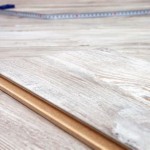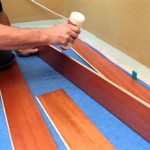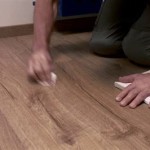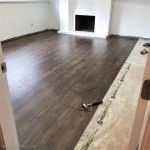Faux Wood Tile Flooring: An Essential Guide
Faux wood tile flooring has become increasingly popular in recent years due to its remarkable resemblance to natural wood floors, combined with the durability and water resistance of ceramic or porcelain tiles. If you're considering installing faux wood tile flooring in your home, it's crucial to understand its key aspects to make an informed decision.
Benefits of Faux Wood Tile Flooring
Faux wood tile flooring offers numerous advantages over traditional hardwood floors:
- Durability: Ceramic and porcelain tiles are exceptionally durable, resistant to scratches, dents, and fading.
- Water Resistance: Unlike natural wood, tiles are impervious to water, making them ideal for areas prone to moisture, such as kitchens, bathrooms, and basements.
- Easy Maintenance: Faux wood tile flooring requires minimal maintenance, with regular sweeping and mopping sufficing.
- Variety of Styles: Faux wood tiles come in a wide array of colors, textures, and finishes, allowing for customization to match any décor.
Installation Considerations
Proper installation is essential for the longevity and performance of faux wood tile flooring:
- Subfloor Preparation: The subfloor must be level, stable, and free of any imperfections.
- Underlayment: An underlayment layer is recommended to reduce noise, prevent movement, and provide additional support.
- Adhesive: A high-quality thin-set adhesive is required to secure the tiles to the subfloor.
- Grout: Grout is used to fill the joints between the tiles and should be sealed to prevent moisture penetration.
Maintenance and Care
Maintaining faux wood tile flooring is relatively simple:
- Regular Cleaning: Sweep or vacuum to remove loose dirt and debris, then mop with a pH-neutral cleaner.
- Grout Cleaning: Grout can become discolored over time; a specialized grout cleaner can be used to restore its appearance.
- Sealing: Periodic sealing of the grout helps prevent staining and moisture damage.
- Avoid Harsh Chemicals: Avoid using abrasive or acidic cleaners, as they can damage the tiles or grout.
Cost Considerations
The cost of faux wood tile flooring can vary depending on factors such as tile quality, size, and installation complexity. Generally, faux wood tiles are more expensive than laminate or vinyl flooring but less expensive than natural hardwood.
Conclusion
Faux wood tile flooring is a versatile and practical option that combines the beauty of natural wood with the durability and water resistance of ceramic or porcelain tiles. By understanding its essential aspects, homeowners can make informed decisions about the installation, maintenance, and cost implications of this popular flooring choice.

Wood Look Tile Ceramic Porcelain The

Our Flooring Solid Wood Vs Faux Tile Chris Loves Julia

Tips For Achieving Realistic Faux Wood Tile Chris Loves Julia

Faux Wood Tile The After Photos Chris Loves Julia Tiles Flooring Bathroom Floor

How To Choose The Right Wood Look Tile Color Arizona

Kate S Wood Plank Tile Floor And Wall Guide Of America

Wood Effect Tiles That Look Like

Faux Wood Tile Or Real Help Me Decide Next Stage Design

Natural Wood Floors Vs Look Tile Flooring Which Is Best For Your House Designed

Kate S Wood Plank Tile Floor And Wall Guide Of America
Related Posts








